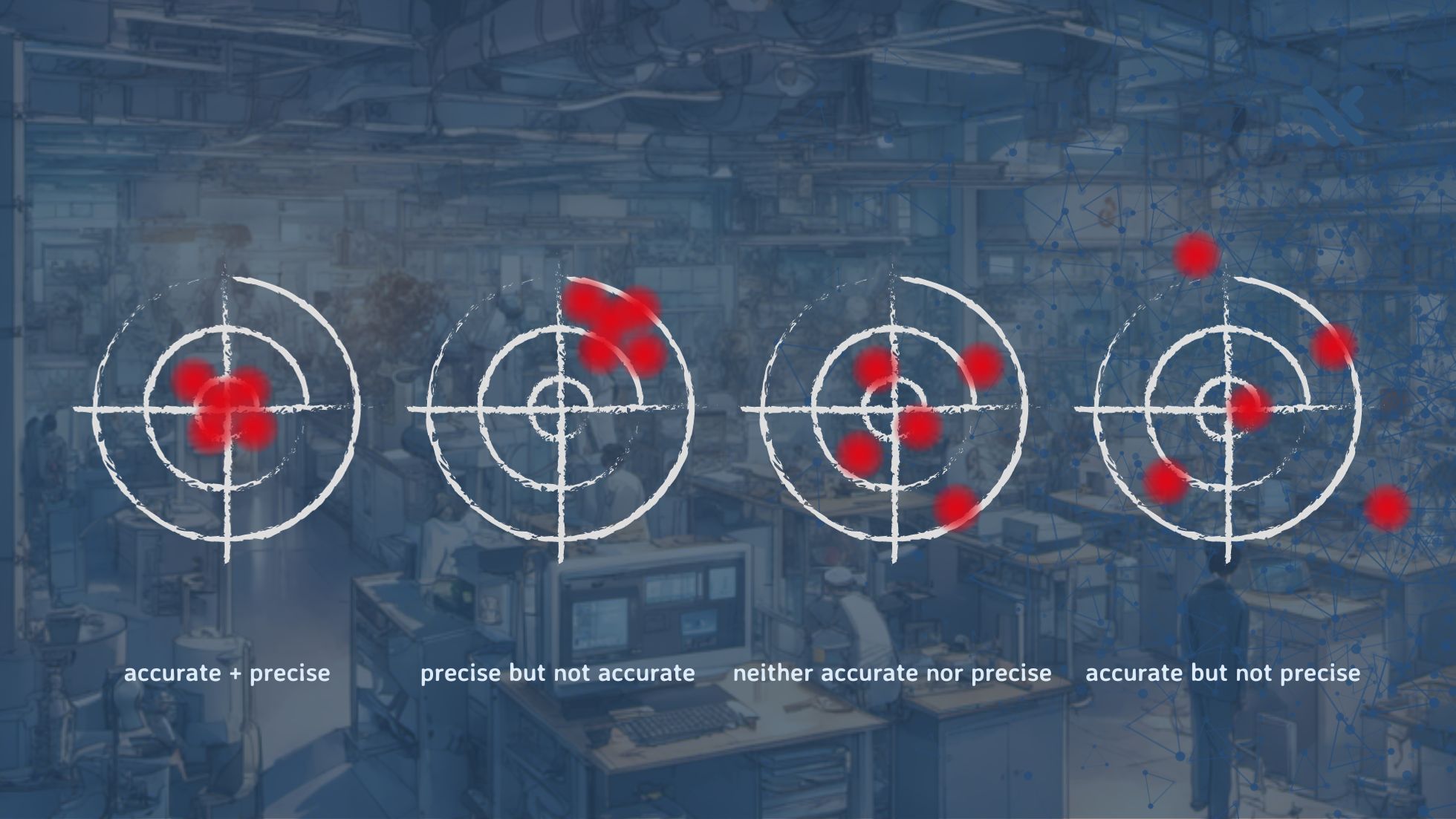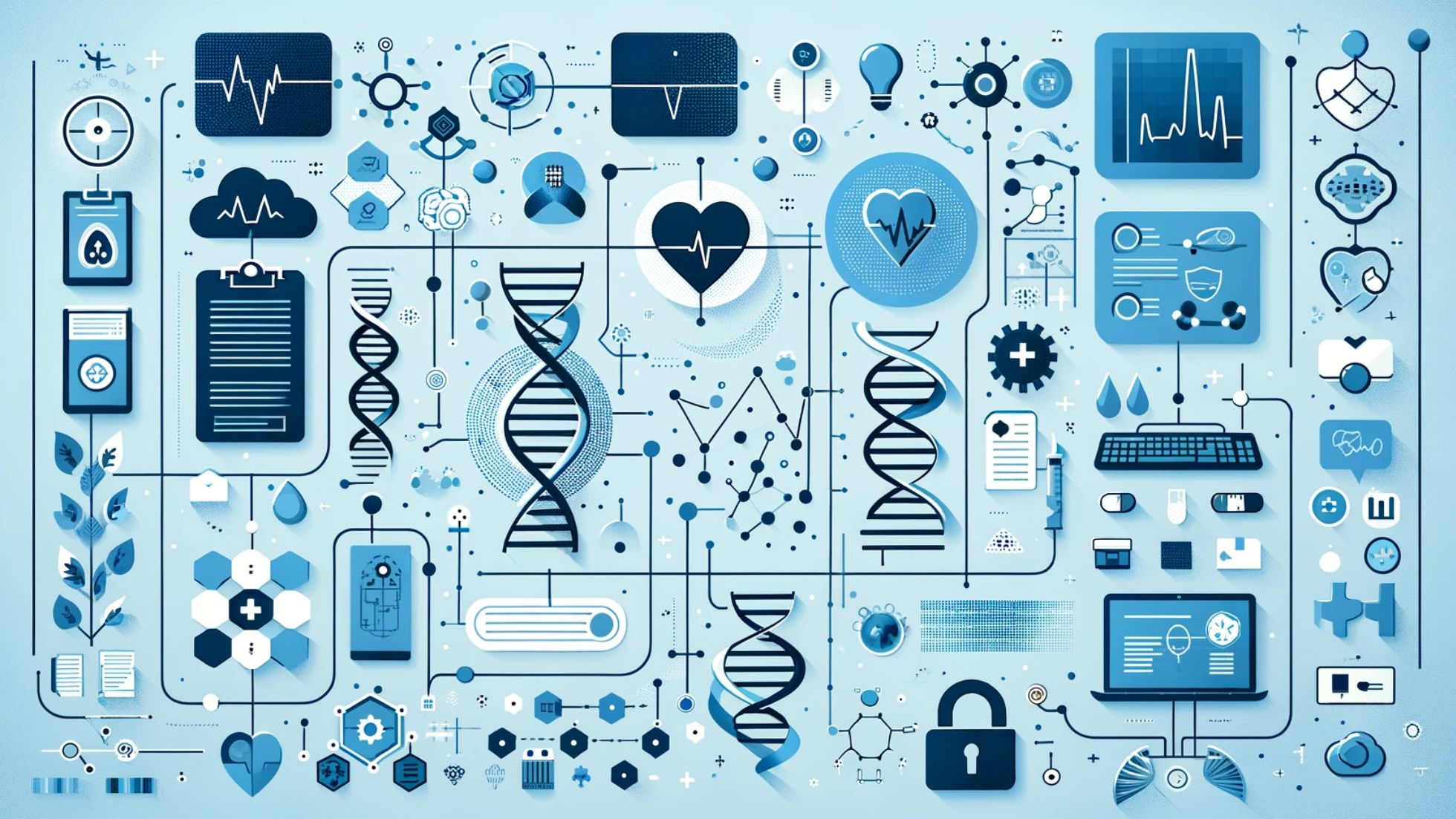Accuracy and precision are two fundamental concepts in the fields of science, engineering, and data analysis. These metrics play a crucial role in evaluating the quality and reliability of measurements and results. Understanding their meanings and implications is essential in order to ensure accurate and precise outcomes.
Accuracy refers to the closeness of measured values to the actual, true value. It is a measure of how well a measurement system or process can provide results that are in alignment with the true values. In scientific and technical disciplines, high accuracy is paramount as it ensures the reliability and authenticity of the obtained results. Accurate measurements enable researchers and professionals to make informed decisions and judgments based on solid data.
Precision, on the other hand, focuses on the consistency and repeatability of measurements. It assesses how well a measurement system can provide similar or identical results when measurements are repeated under the same conditions. Precision is crucial in maintaining the reliability and stability of measurement systems and processes. A precise measurement system minimizes variations and uncertainties, allowing for consistent and reliable data collection.
In the context of precision medicine, accuracy and precision are especially critical. Precision medicine aims to develop personalized therapies and treatment plans based on individual genetic, biological, and lifestyle characteristics. Highly accurate and precise diagnostic tests are necessary for identifying specific markers that influence disease progression. Accurate and precise data analysis is essential in making informed therapeutic decisions tailored to each individual.
Accuracy (Precision):
- Accuracy refers to the closeness of measured values to the actual, true value.
- An accurate measurement system produces results that are very close to the true values.
- In the specified disciplines, high accuracy is required to ensure reliable and authentic results that support informed decisions and judgments.
Precision (Precision):
- Precision refers to the consistency or repeatability of measurements when measurements are repeated under the same conditions.
- A precise measurement system provides similar or identical results when measurements are repeated.
- Precision is critical to ensure the reliability and stability of measurement systems and processes.
 Both metrics are essential for success in life sciences, clinical research, healthcare, precision medicine, vertical farming and data-driven solutions. Here are some specific reasons why accuracy and precision are important:
Both metrics are essential for success in life sciences, clinical research, healthcare, precision medicine, vertical farming and data-driven solutions. Here are some specific reasons why accuracy and precision are important:- Quality control and assurance:
- Measurement accuracy and precision are fundamental to quality control and assurance to ensure that products and services meet established standards.
- Regulatory and compliance requirements:
- Compliance with industry regulations and standards, which often have stringent accuracy and precision requirements.
- Research and Development:
- Supporting research and development by providing reliable and repeatable data that helps improve products and processes.
- Data Integrity and Decision Making:
- Improve data integrity and support data-driven decision making by providing accurate and precise measurements.
- Customer Trust and Market Reputation:
- Build customer confidence and improve market reputation by providing high-quality, accurate, and precise products and services.
- Operational Efficiency and Productivity:
- Increase operational efficiency and productivity by minimizing errors and variations in processes.
- Risk Management:
- Effectively manage risk through early detection and correction of variations based on inaccurate or imprecise measurements.
 Key Strategies and Methods
Key Strategies and Methods
Improving accuracy and precision in scientific, technical, and data-driven domains is of utmost importance for organizations to ensure the reliability and quality of their products and services. By implementing a combination of methodological approaches, deploying advanced technologies, and following best practices, organizations can significantly enhance their measurement processes and systems.
One key strategy for improving accuracy and precision is standardization and control. By standardizing measurement methods and equipment and controlling environmental conditions, organizations can minimize variability between measurements and increase the overall accuracy and precision. Regular calibration of instruments and equipment to recognized standards also ensures that measurements remain accurate and precise over time.
Implementing robust Quality Control (QC) and Quality Assurance (QA) systems is another essential strategy. These systems help monitor and improve measurement accuracy and precision by identifying and addressing any deviations or errors. It is crucial to provide proper training and skills development to personnel, emphasizing the importance of accuracy and precision and teaching them the proper use of measurement equipment and techniques.
Validation and verification of measurement systems and methods through independent means are also critical. This ensures that the accuracy and precision of measurements are validated and verified, enhancing confidence in the reliability of the data collected. The use of automation and advanced measurement technology can further reduce human error and improve accuracy and precision.
Statistical Process Control (SPC) techniques can be applied to monitor and control production processes, thereby improving accuracy and precision. Effective data management and advanced analysis techniques are essential for identifying deviations and addressing the root causes of inaccuracies and imprecision. Organizations should commit to a cycle of continuous improvement by regularly reviewing and improving measurement processes and systems.
Must Haves
- Standardization and control:
- Standardization of measurement methods and equipment and control over environmental conditions can help reduce variability between measurements and increase accuracy and precision.
- Calibration:
- Regular calibration of instruments and equipment to recognized standards ensures that measurements remain accurate and precise over time.
- Quality Control (QC) and Quality Assurance (QA):
- Implement robust QC and QA systems to monitor and improve measurement accuracy and precision.
- Training and skills development:
- Train personnel on the importance of accuracy and precision and the proper use of measurement equipment and techniques.
- Validation and verification:
- Validation of measurement systems and methods through independent verification to ensure their accuracy and precision.
- Automation and technology use:
- Use of automation and advanced measurement technology to reduce human error and improve measurement accuracy and precision.
- Statistical Process Control (SPC):
- Application of statistical techniques to monitor and control production processes to improve accuracy and precision.
- Data Management and Analysis:
- Effective data management and advanced analysis techniques can help identify deviations and address the root causes of inaccuracies and imprecision.
- Continuous improvement:
- Commit to a cycle of continuous improvement through regular review and improvement of measurement processes and systems.
- Internal and External Audits:
- Conducting audits to verify compliance with standards and identify areas for improvement.
Enabling factors play an important role
- Culture of quality and excellence:
- Fostering a culture that emphasizes the importance of accuracy and precision can strengthen commitment to quality at all levels of the organization.
- Feedback loops:
- Establishing feedback loops between different stages of the measurement and production process can help identify problems early and take corrective action.
- Industry guidelines and standards:
- Following industry guidelines and standards can help understand and apply best practices for accuracy and precision.
- Collaboration and benchmarking:
- Collaboration with other organizations and industry experts, as well as benchmarking against industry standards, can provide valuable insights and opportunities for improvement.
Methodical approaches involve following established protocols and best practices in measurement processes. This includes standardizing measurement methods and equipment, controlling environmental conditions, and implementing robust quality control and quality assurance systems. By adhering to these methodologies, organizations can minimize variability between measurements and ensure consistent accuracy and precision.
 Accuracy and Precision in Precision Medicine
Accuracy and Precision in Precision Medicine
By combining these methodical approaches, a supportive organizational culture, and advanced technologies, organizations can create a framework that promotes accuracy and precision in their operations. This not only ensures the reliability and quality of their products and services but also enhances overall customer satisfaction. Improved accuracy and precision can also lead to more effective treatment outcomes in fields such as precision medicine, where personalized therapies are developed based on individual characteristics.
Accuracy and precision occupy a central position in the context of personalized medicine or precision medicine. This medical direction aims to develop individually tailored therapies and treatment plans based on the genetic, biological and lifestyle uniqueness of each individual. Here are some aspects where accuracy and precision are critical:
- Diagnostic testing:
- Highly accurate and precise diagnostic tests are critical for identifying specific molecular and genetic markers that can influence disease progression. Correct interpretation of these markers is essential for the development of individually tailored treatment plans.
- Therapeutic decision making:
- Accuracy and precision in data analysis enable informed therapeutic decision making. This includes the selection of appropriate drugs, dosages, and treatment strategies based on individual patient characteristics.
- Pharmacogenomics and pharmacogenetics:
- Accurate and precise analyses in the field of pharmacogenomics and pharmacogenetics can better understand and predict interactions between genetic factors and drug responses.
- Clinical Research and Development:
- In clinical research, accuracy and precision in data collection and analysis enable reliable evaluation of the efficacy and safety of new therapeutic approaches.
- Monitoring and follow-up:
- Accurate and precise monitoring of patient progression is critical to evaluate and adjust treatment efficacy.
- Technology and data management:
- Advanced technologies such as next-generation sequencing (NGS) and artificial intelligence (AI) require high accuracy and precision to provide relevant insights for personalized medicine.
- Regulatory and compliance requirements:
- Compliance with regulatory standards and quality assurance guidelines in personalized medicine also requires high accuracy and precision in all aspects of therapy development and delivery.
- Patient safety:
- Accuracy and precision contribute significantly to patient safety by minimizing the risks of misdiagnosis and adverse drug reactions.
- Improving treatment outcomes:
- Improving accuracy and precision in diagnosis and treatment can improve treatment outcomes and enhance patients' quality of life.
Personalized medicine represents a paradigm shift in healthcare by shifting the focus from a "one size fits all" approach to individually tailored therapies. Accuracy and precision are essential to delivering on the promise of personalized medicine and providing patients with more effective and safer treatment.
Precision and Accuracy in Medical Research and Practice
Accuracy and precision in medical research and practice are critical to the development and application of novel therapies, particularly in the context of personalized or precision medicine. Below are some prominent examples where accuracy and precision have been instrumental in realizing innovative therapeutic approaches:
- Enabling Technologies in Precision Medicine:
- Precision medicine has already provided significant insights into the mechanisms of disease development, biological targets that can directly inhibit disease progression, and biomarkers that reflect treatment response. These insights have made significant overall progress in improving patient care Enabling technologies for personalized and precision medicine.
- Development of precision nanoparticles for drug delivery:
- Nanoparticles have been developed to overcome the limitations of free therapeutic agents and navigate biological barriers-systemic, microenvironmental, and cellular-that are heterogeneous. This is an example of precision in the design of drug delivery systems to enable more effective therapy Engineering precision nanoparticles for drug delivery.
- High-throughput proteomics in precision oncology:
- A high-throughput proteomics method based on data-independent capture and parallel accumulation-serial fragmentation can quantify over 10,000 proteins in a single run. This method demonstrates the potential for biomarker discovery and precision medicine in diverse biological and clinical samples The growing role of precision and personalized medicine for cancer ....
- Artificial intelligence in early drug discovery:
- AI algorithms represent the next frontier in precision medicine, enabling a fully personalized approach to drug design to address patient heterogeneity at the molecular level. This ultimately positively impacts clinical practice Artificial intelligence in early drug discovery enabling precision medicine.
- Precision immunoprofiling using image analysis and AI:
- Applying precision immune profiling through image analysis and AI to biology and disease enables better assessment of immuno-oncology biomarkers, such as PD-L1 and immune cell infiltrates, as predictors of patient response Are innovation and new technologies in precision medicine paving a new ....
These examples illustrate how accuracy and precision contribute significantly to the development and application of novel, individualized therapeutic approaches that can improve patient care and optimize treatment outcomes.
 The overall Impact of Automation and Digitalization in Research Facilities
The overall Impact of Automation and Digitalization in Research Facilities
The above issues can have significant consequences for the technology stack (TechStack) of research institutions and laboratories. Here are some concrete considerations and priorities for automation and digitization in these environments:
- Technology selection:
- Investments in state-of-the-art technologies and systems that support accuracy and precision should be prioritized. This includes automation solutions, measurement and analysis equipment, and software platforms for data management and analysis.
- Data management:
- A robust and scalable data management system is critical to efficiently manage, analyze, and store the vast amounts of data generated in modern research.
- Automation and robotics:
- Automation of laboratory processes and the introduction of robotics can increase efficiency, reduce errors, and improve the accuracy and precision of results.
- Artificial intelligence and machine learning:
- These technologies can be integrated into the TechStack to support complex data analysis, identify patterns, and accelerate the development of personalized therapeutic approaches.
- Cloud technologies:
- Cloud computing enables efficient and scalable data processing, storage, and analytics, which is especially important for managing large volumes of data and fostering collaboration.
- Cybersecurity:
- Implementing strong security protocols and systems is critical to protect the confidentiality and integrity of sensitive medical and genetic data.
- User training and support:
- To maximize accuracy and precision, it is important that users are well trained and have access to technical support to effectively use the technologies.
- Regulatory Compliance:
- The TechStack should be able to support compliance with industry standards, regulatory requirements, and quality control guidelines.
- Interoperability:
- Promoting interoperability between different systems and platforms is critical to facilitate data integration and information sharing.
- Fostering Innovation:
- Establishing infrastructures that foster innovation and collaborative research can pave the way for the discovery and application of novel therapies.
- Continuous Improvement:
- A commitment to continuously improving and updating the TechStack in response to new technologies and research discoveries is critical to staying on the cutting edge of technology and promoting quality research and development.
By addressing these priorities in the design and implementation of the TechStack, research institutions and laboratories can be better positioned to take advantage of automation and digitization, improve accuracy and precision, and support the development and application of novel therapies.
In conclusion, accuracy and precision are vital metrics in science, engineering, and data analysis. They ensure the reliability and quality of measurements and results, supporting informed decision making, improving products and processes, and enhancing customer trust and market reputation. By implementing key strategies and methods, organizations can significantly improve accuracy and precision in their operations and measurement systems, ultimately leading to better outcomes and success.




